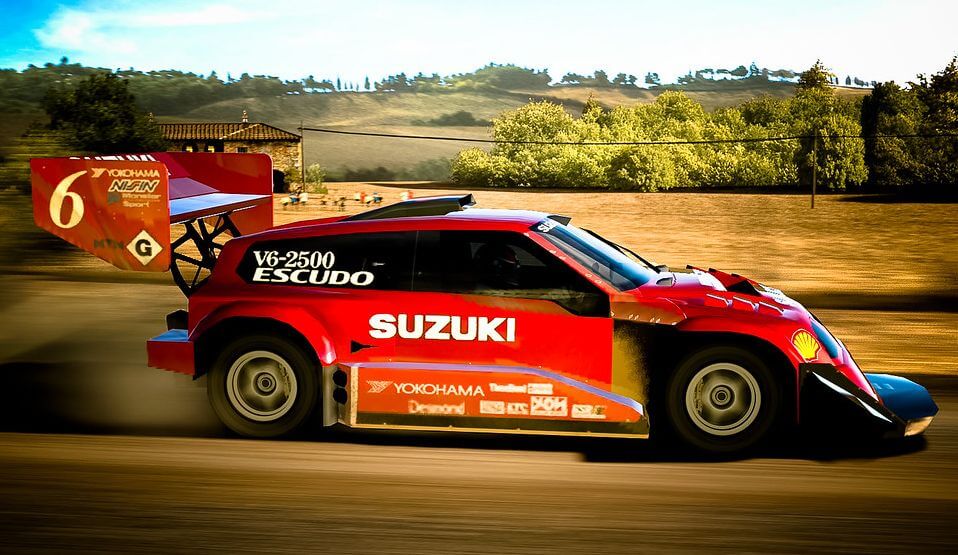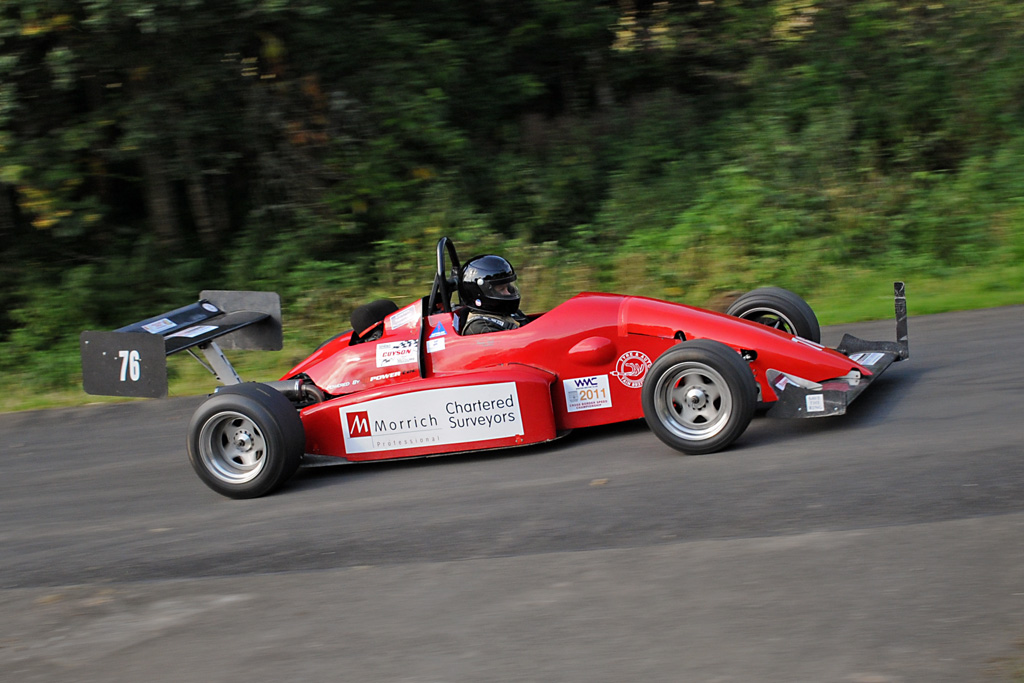For car enthusiasts and adrenaline junkies, hill climb racing stands as a testament to human and machine excellence, pitting the will to conquer against formidable terrains. A niche sport that has garnered a dedicated following worldwide, hill climb racing requires a distinct set of skills and, most importantly, the right set of wheels. In this definitive guide, we dissect the quintessential features of the best hill climb racing car, unraveling the adrenaline-inducing world of gravity-defying automotive mastery.
Understanding Hill Climb Racing
Before delving into the nitty-gritty of vehicles, let’s take a pit stop to understand the sport itself. Hill climb racing is a motorsport event that involves driving powerful cars through a course, attempting to achieve the highest speed possible on the uphill ascent. These races are often conducted on closed public roads and paths with elevations that can pose both technical and speed challenges. The goal isn’t just to reach the top, but to do so with the fastest time, which requires a perfect amalgamation of precision, power, and control.
The Best Hill Climb Racing Car: A Machine of Unrivaled Prowess
What makes a car the best fit for dominating a hill climb race? It’s a complex calculation of factors, from the mechanical underpinnings to the driver’s finesse. Let’s break down the essential elements that transform a car into the ultimate hill climbing machine.
Engine Power and Torque: The Heart of the Machine
At the epicenter of a hill climb racing car is its engine, the very source of its uphill prowess. In these races, high horsepower and torque figures are non-negotiable. Unlike circuit racing that may necessitate nuanced handling, hill climb racing favors sheer acceleration, and that’s where a robust engine comes in. Vehicles designed for this sport often boast power plants that deliver startlingly high torque right from idling speeds, providing the necessary thrust to tackle steep inclines with ferocity.
Lightweight and Aerodynamic Design: Aiming for the Sky
Every ounce counts in the physics-defying battle against gravity, and a lightweight chassis can be the difference between a winning run and a second-place finish. Additionally, an aerodynamically optimized design ensures that as much air as possible pushes the car to the ground, enhancing traction and control on the ascent. Stripping down unnecessary weight, including interior comfort features, and crafting the bodywork to slice through the air like a blade are standard practices in crafting a hill climb racing car.
Specialized Suspension and Traction Systems
The demands placed on a car’s suspension system during a hill climb are immense. Absorbing the shock of rough terrain while maintaining stability and control under acceleration is an engineering marvel. Specialized suspensions that can be adjusted to alter the car’s ride height and damper settings can be found in vehicles tailored for hill climb racing. These high-performance suspensions work in tandem with advanced traction control systems to ensure that power is put down effectively, even on the most precarious of surfaces.
Safety Features: A Race Worth Winning
While the pursuit of speed and elevation is exhilarating, it also comes with inherent risks. Safety features in hill climb racing cars are paramount, with roll cages, fire suppression systems, and state-of-the-art racing harnesses being just the tip of the iceberg. The best hill climb racing cars are a testament to the industry’s dedication to the driver’s well-being, incorporating cutting-edge safety technologies without compromising on performance.
The Evolution of Hill Climb Racing Cars
As with any motorsport, advancements in technology and engineering have catapulted hill climb racing cars from being high-powered variants of regular sports cars to bespoke, sculpted masterpieces designed with one goal in mind: to conquer the hill. The evolution of these cars has seen a transition towards hybrid and electric powertrains that offer instantaneous torque delivery, as well as the integration of data analysis systems that help drivers optimize their performance.
Innovations in Power Generation: The Electric Shock
Electric hill climb racing cars, a more recent entry into the field, are rewriting the rules of speed. Electric motors, known for their ability to deliver maximum torque from a standstill, are providing drivers with newfound acceleration capabilities. Moreover, these cars are quieter and cleaner, offering an environmentally friendly option without compromising on performance.
Big Data and Telemetry: The Smart Approach
Modern hill climb racing cars are packed with sensors that collect data on every aspect of the run. From measuring tire temperatures to engine performance, this wealth of information is analyzed to fine-tune the car’s setup for the next run. By leveraging telemetry and big data analysis, drivers and engineers can optimize every aspect of the performance, potentially shaving crucial seconds off the time.
The Human Element: From the Driver’s Seat to Victory Lane
No amount of technological innovation can overshadow the role of the driver in hill climb racing. Here, human-machine synergy is pivotal. Drivers are not just steering and shifting; they are unearthing feat-inches out of every corner, controlling slides, and managing potentially dangerous skids with the finesse of a virtuoso. The ability to read the road and conditions, coupled with a racer’s reflexes and courage, can transform a good run into a championship-worthy ascent.
Heritage and Legends: Iconic Hill Climb Racing Cars
As with any discipline of racing, certain cars have etched their names in history, becoming icons of the hill climb circuit. The Pikes Peak International Hill Climb, an event famed for its treacherous 12.42-mile trek to the 14,115-foot summit, has been the stage for many of these legends. Cars like the Suzuki Escudo Pikes Peak and the Volkswagen I.D. R have set the bar for design and performance, solidifying their status as trailblazers in the world of hill climb racing.

The Thrill of the Climb: Experiencing Hill Climb Racing
For those attending a hill climb event, the sensory overload is unlike any other. The roar of high-revving engines, the smell of burning rubber, and the sight of cars defying gravity create an atmosphere that resonates with any motorsport fan. Whether perched atop a mountain or nestled in a valley, the vantage points offer unique perspectives of the competition, making it an event as thrilling to watch as it is to partake in.
Conclusion: The Hill Climb Racing Car of Tomorrow
As technology continues to advance and environmental consciousness permeates the automotive industry, the hill climb racing car of tomorrow will likely be unrecognizable from its predecessors. Electric power, autonomous driving aids, and even more sophisticated safety features will redefine what it means to race. Nevertheless, the core spirit of hill climb racing—a test of agility, power, and the human spirit—will remain, ensuring that the sport continues to captivate and inspire generations of racers and enthusiasts.
The world of hill climb racing is as steeped in tradition as it is in the future. With every ascent, it writes a new chapter in the annals of automotive history. The pursuit of the perfect hill climb racing car is not merely about the chase for the title but about embracing the wonders of engineering and the will to push ever skyward. As the horizon beckons, one cannot help but wonder what machine will next etch its mark upon the hill, and in our hearts.
Which is best car in Hill Climb Racing?
Determining the best car in hill climb racing is a nuanced affair, as it often comes down to the specific conditions of the course and the preferences of the driver. While some might point to the engineering marvels such as the Volkswagen I.D. R, which shattered records at Pikes Peak, others may refer to legendary machines like the Suzuki Escudo Pikes Peak, known for its raw power and dominance in the 1990s. Ultimately, the best car is one that harmoniously blends advanced technology, driver skill, and adaptability to the ever-changing conditions of the mountain—the epitome of what hill climb racing is all about.
What is the best bike in Hill Climb Racing?
The best bike in Hill Climb Racing defies a one-size-fits-all answer, as the choice hinges on a variety of factors like the rider’s skill level, the course’s characteristics, and even the weather conditions. Craftsmanship in bikes such as Ducati’s Multistrada Pikes Peak edition showcases specialized tuning and lightweight design ideal for nimble maneuvers and rapid ascents. Meanwhile, stalwarts like the KTM 450 Rally replicate the demanding nature of the Dakar rally for hill climb events, offering unparalleled endurance and performance. Riders must choose a bike that pledges not just speed and power but also precision and control to dance up the mountain’s spine.
Which is the best stage in Hill Climb Racing?
The best stage in Hill Climb Racing often ignites debate among enthusiasts, as each offers a different challenge and atmosphere that appeals to various drivers and fans. If one were to judge by sheer notoriety and the test it poses, then Pikes Peak in Colorado would be a prime contender. Its winding path to the heavens dares racers with tight turns, drastic elevation changes, and thin air, manipulating vehicles to their limits. Meanwhile, stages like the Goodwood Festival of Speed’s hill climb attract those who relish the blend of high-speed stretches and skill-testing corners, ensconced within the history of British motorsport. Each stage carries its unique flavor of competition, forming a tapestry of skill, danger, and pure adrenaline that defines hill climb racing.





